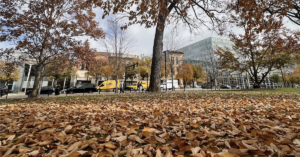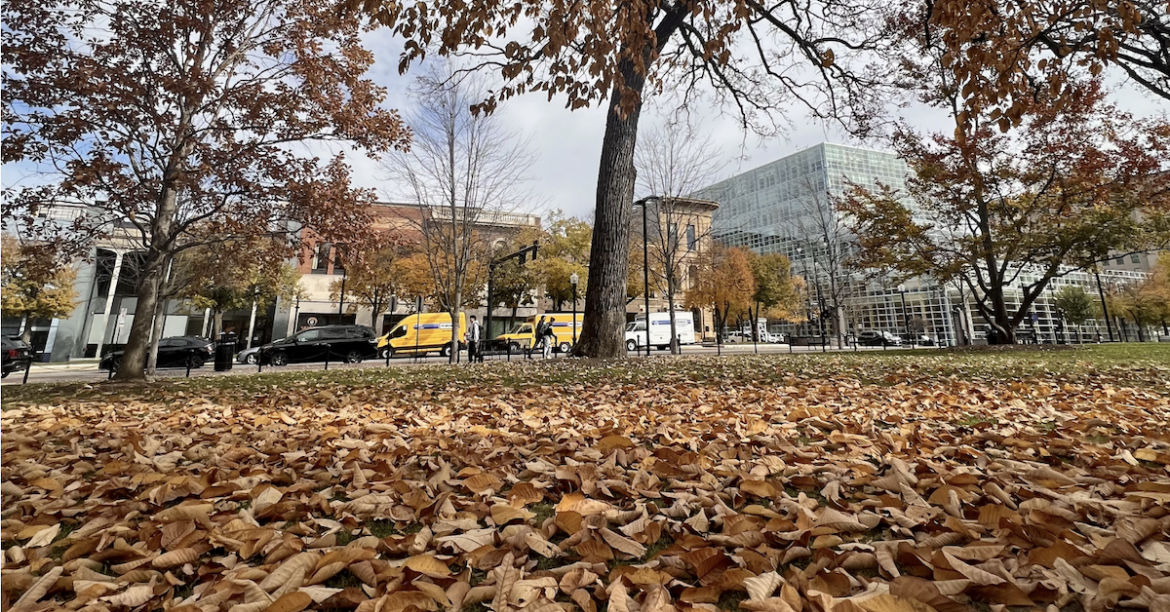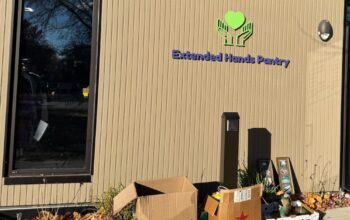While fallen leaves are often seen as lawn litter that needs to be cleared away, they can actually be a valuable asset to enrich lawns and reduce the need for chemical fertilizers.
That’s why, as fall unfolds, the City of Madison is pushing a “leave the leaf” movement, sparking discussion on eco-friendly alternatives to autumn yard work and encouraging residents to manage leaves on their own property.
“It’s just about getting the word out and encouraging others to get the word out,” said Caitlin McAleavey, the watershed engagement manager for the Clean Lakes Alliance, a nonprofit dedicated to improving area water quality.
The “leave the leaf” initiative is designed to urge residents to leave fallen leaves on their property or mulch them, which means breaking them down so they decompose quicker and release nutrients back into the soil. However, not all residents are actively involved in managing their leaves this way.
“It’s not on my radar. My husband just moves the leaves to the curb so they get collected. It’s pretty simple,” said a Jefferson St. resident in Madison.
However, leaves left on the road can pose environmental threats to local waterways. When leaves decompose or are exposed to rain on the street, they create phosphorus-rich runoff that flows into storm drains and into surrounding lakes.
Experts say to think of it like a tea bag: When water flows through fallen leaves, it draws out phosphorus and other nutrients, much like tea steeping in water.
High phosphorus levels in water bodies can lead to algal blooms, the smelly, green mats that cover the water’s surface, blocking sunlight from reaching underwater organisms. These organisms cannot survive if there isn’t enough oxygen available, disrupting the entire food web and negatively impacting the health of the ecosystem.
To address these issues, the Clean Lakes Alliance works to improve water quality and reduce phosphorus levels in the Yahara Watershed, which spans a quarter of Dane County and connects lakes Mendota, Monona, Waubesa and Kegonsa. With approximately 385 square miles of land draining into these waters, the watershed ultimately flows into the Mississippi River.
One of the alliance’s key initiatives encourages residents to keep fallen leaves on their properties and off the streets during the fall season.
McAleavey said removing leaves from the street before it rains can reduce the amount of phosphorus in urban stormwater by 80% compared to no leaf removal. Additionally, this approach to nature’s litter reduces the demand for additional leaf collection trucks and staff that collect and transport the material to compost sites, saving taxpayer dollars and the environment.
“A lot of people don’t realize that even if they’re not directly on the shores of a lake, or even within a close distance to a lake, that these types of actions can have really big impacts for them,” McAleavey said.
A common misconception around leaf litter is that when left on lawns, leaves prevent grass from growing in the spring. To continue its focus on education efforts, the Clean Lakes Alliance has collaborated with UW–Madison’s O.J. Noer Research Station, which studies development and promotion of turfgrass management technologies in Wisconsin.
While still in its early stages, research from the station indicates that certain amounts of leaf litter do not negatively affect grass health. Its studies suggest that even five inches of leaf litter has no impact, while up to a foot results in minimal effects by the following spring.
This research will expand to explore various leaf types, methods and soil conditions as spring approaches.
“We’re excited to see what comes of it because it challenges the misconception that leaves harm lawns,” McAleavey said.
Another valuable resource for promoting eco-friendly yard care is Ripple Effects, an educational outreach program aimed at improving water quality. The program offers residents the option to sign up for email or text alerts that notify them one or two days before rain is forecasted, serving as a timely reminder to keep leaves off of the street and onto their property.
Maya Herzog, a senior at UW-Madison majoring in environmental studies, lives on Mifflin St. and signed up for the program after seeing “leave the leaf” signs in nearby residential neighborhoods.
“You know that it’s not a thing you have to commit to all year round. It’s just like a very seasonal thing,” Herzog said. “It’s like maybe two weeks out of the year to focus on these types of actions that really benefit our lakes next summer."






